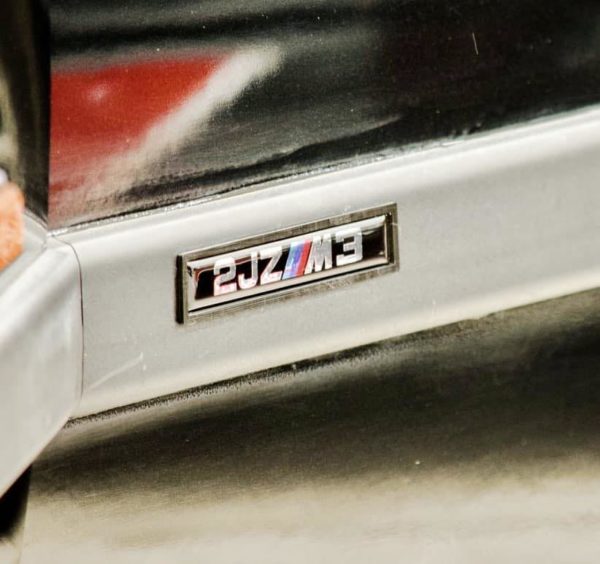The world of motorsports has an undeniable allure—a symphony of roaring engines, the exhilaration of speed, and the adrenaline surge of competition. It may seem like an exclusive realm reserved for the elite, but the truth is that motorsports offer a wide range of accessible entry points for enthusiasts from all walks of life. From the precision of autocrossing to the excitement of bracket racing and the challenges of time trial circuit racing, the avenues to immerse yourself in this thrilling world are numerous.
In this guide, we’ll delve into the ease of entry into motorsports through autocrossing, bracket racing, and time trial circuit racing. Whether you’re a seasoned gearhead or just discovering your passion for speed, you’ll gain valuable insights on how to take your first steps into the exciting world of motorsports.
Autocrossing: Precision in Motion
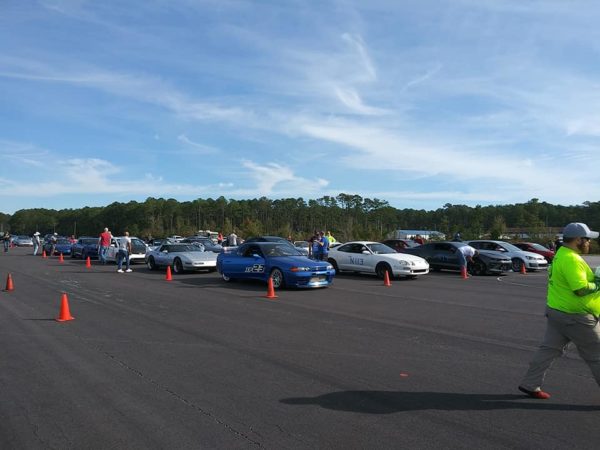
Affordable Entry
Autocrossing, for many motorsports enthusiasts, is the ideal gateway to competitive racing. It provides an accessible and relatively budget-friendly way to experience the thrill of pushing a car to its limits without requiring a dedicated racing vehicle. Autocross events are typically held in spacious parking lots or on closed courses, where participants compete against the clock rather than head-to-head against other drivers. Here’s why autocrossing is the perfect starting point for budding racers:
- Affordable Entry: Unlike some other motorsports, autocrossing doesn’t demand a substantial financial commitment. Most participants use their daily drivers or reasonably priced sports cars, making it accessible to a broad range of enthusiasts. Costs primarily revolve around event entry fees, safety equipment, and minor vehicle modifications.
- Minimal Risk: Autocross events take place at relatively low speeds, with safety as a top priority. Barriers, cones, and other protective measures are in place to minimize the risk of accidents, making it an excellent choice for beginners looking to build confidence behind the wheel.
- Skill Development: Autocross emphasizes precision driving, car control, and mastering the fundamentals of racing. Participants develop valuable skills that can be applied to other forms of motorsports, should they choose to explore them further.
- Inclusive Community: The autocross community is renowned for its inclusivity and welcoming atmosphere. Experienced racers often mentor newcomers, helping them improve their skills and navigate the intricacies of the sport.
Take Control
For optimizing your vehicle’s performance in autocross, DIYAutoTune.com is a valuable resource. They offer a range of standalone engine management products, such as the MegaSquirt MSPNP series, which allows you to fine-tune and optimize your car’s engine for maximum performance. Whether you’re in a BMW E36 or the ever-present Mazda Miata, we’ve got you covered. With the ability to adjust fuel, ignition timing, and other engine parameters, you gain a competitive edge on the autocross course.
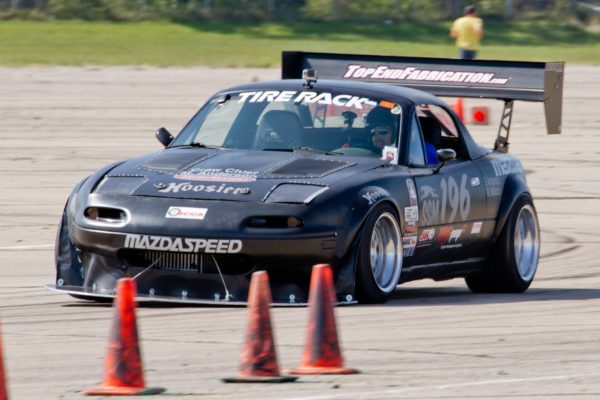
Getting Started in Autocross
Let’s kickstart your autocross journey:
- Find Local Events: Research local autocross clubs or organizations in your area. These clubs frequently host events, with schedules and registration details often available on their websites or social media pages.
- Prepare Your Vehicle: Autocross events come with specific rules and regulations regarding vehicle modifications. Common upgrades include performance tires, suspension enhancements, and brake improvements. Ensure your car is in sound mechanical condition and consider adding safety equipment like a helmet.
- Register and Attend: Sign up for an autocross event and attend it initially as a spectator to familiarize yourself with the atmosphere and rules. Most clubs will even allow you to ride along with the racers so you can experience the thrill firsthand for free! Once you’re comfortable, register as a participant!
- Learn and Improve: Make the most of the opportunity to learn from experienced autocrossers. Don’t hesitate to ask questions and seek advice on enhancing your driving skills. And, once you’ve gained the experience yourself, don’t forget to pay it forward by treating newcomers the way you want to be treated. Be courteous, answer questions, and offer ride-alongs whenever you can. All it takes is one ride!
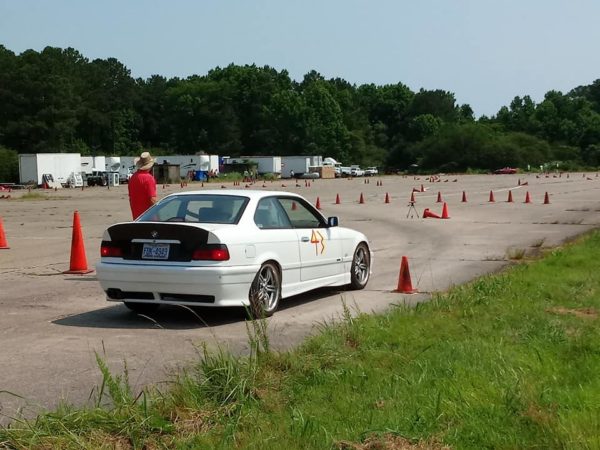
Autocross FAQs
Is autocrossing expensive to get started in?
Autocrossing is one of the more affordable entry points into motorsports. Unlike some other forms of racing, you don’t need a dedicated racing vehicle. Most participants use their daily drivers or reasonably priced sports cars. The main costs are event entry fees, safety equipment, and minor vehicle modifications.
Is autocrossing safe for beginners?
Yes, autocrossing is considered a safe motorsport for beginners. Events are conducted at relatively low speeds, and safety measures like barriers and cones are in place to minimize risks. It’s an excellent choice for building confidence behind the wheel. Autocrossing is one of the only places you can competitively push a vehicle to its handling limits without the worry of hitting any solid objects. I personally got my children involved in autocrossing when they started driving to teach car control skills not found in any driver’s ed class.
Learn more on the SCCA official Autocross website and get started TODAY!
Bracket Racing: The Thrill of Consistency
Diverse Field
Bracket racing offers a distinctive and accessible entry point into competitive drag racing for many motorsports enthusiasts. Unlike traditional drag racing, where the fastest car prevails, bracket racing levels the playing field by allowing slower cars to compete against faster ones. Here’s why bracket racing is an excellent choice for motorsports newcomers:
- Diverse Field: Bracket racing welcomes a wide variety of vehicles, ranging from daily drivers to dedicated race cars. The goal is to predict your vehicle’s elapsed time (ET) as accurately as possible and then compete against other racers in a handicapped format.
- Cost-Effective: While some participants invest significantly in their vehicles, bracket racing doesn’t demand extensive modifications. A well-maintained stock car can be competitive with minor upgrades. Entry fees are reasonable, and camaraderie within the bracket racing community is strong.
- Beginner-Friendly: Bracket racing offers a straightforward and beginner-friendly format. The handicap system ensures even novice racers have a shot at victory, making it less intimidating for newcomers.
- Consistency Matters: Success in bracket racing revolves around precision and consistency. It’s less about raw speed and more about accurately predicting your car’s performance and achieving the same ET consistently.
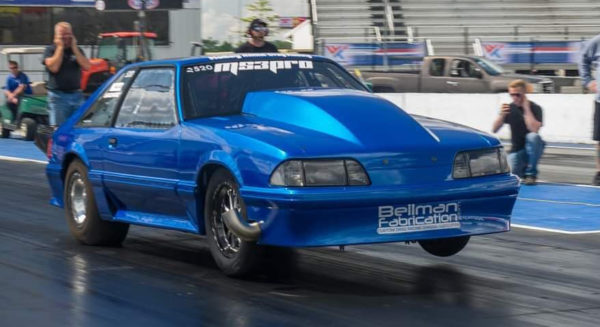

Turbo, Nitrous, or Naturally Aspirated: We’ve got you covered!
For fine-tuning your vehicle for bracket racing, DIYAutoTune.com has you covered there too. Standalone engine management products, such as the MegaSquirt MS3X or MS3Pro EVO/Ultimate, enable you to optimize your car’s performance and achieve the consistency needed for success in bracket racing. One of the greatest advantages of using standalone EFI is its ability to adjust to environmental changes, keeping consistent regardless of the weather. Barometric pressure changes? Temperature changes? No problem when using standalone EFI. Let the ECU work out the fuel and spark maps, while you focus on victory. Not to mention the really trick features of ECUs like the MS3Pro PNP where traction control and launch control strategies can be fine-tuned to perfection. And if you happen to be driving the venerable Foxbody Mustang our MS3Pro PNP ECUs are the quickest and easiest way to take advantage of ALL a standalone ECU has to offer!
Getting Started in Bracket Racing
To embark on your bracket racing journey, follow these steps:
- Research Local Tracks: Identify nearby drag racing tracks that host bracket racing events. Most tracks provide event schedules online or through social media. Take note of the specific rules and regulations for bracket racing at your chosen track.
- Prepare Your Vehicle: Ensure your car is in good working order and complies with safety requirements. Some tracks have specific guidelines for helmets and safety equipment, so ensure your gear meets the standards.
- Learn About Handicap Racing: Familiarize yourself with the concept of handicap racing and how it operates. Understanding the basics of dial-ins and reaction times is crucial for success in bracket racing.
- Attend an Event: Start by attending a bracket racing event as a spectator. This will give you a sense of the atmosphere and how races are conducted. Pay attention to how racers predict their ET and make adjustments.
- Practice and Compete: When you feel ready, register for your first bracket racing event as a participant. Remember that consistency is key, so focus on honing your reaction times and ET predictions.

Bracket Racing FAQs
Do I need a high-performance vehicle for bracket racing?
No, you don’t need a high-performance vehicle for bracket racing. Many participants use well-maintained stock cars with minor upgrades. The handicap system levels the playing field, so it’s more about consistency in predicting your car’s performance.
Is bracket racing suitable for beginners?
Yes, bracket racing is beginner-friendly. The handicap format allows novice racers to compete on an equal footing with experienced ones, making it less intimidating for newcomers.
The NHRA or Nation Hot Rod Association’s website is a GREAT resource for getting started. Everything from what to bring to the track, to competitions held in your local area can be found. Jump on over and PUT IT IN THE LIGHTS!
Time Trial Circuit Racing: Mastering the Track
Access to World-Class Tracks
If you’re eager to experience the rush of motorsports on a challenging road course, time trial circuit racing might be your calling. This form of racing takes place on established racetracks, where participants compete for the fastest lap times rather than engage in wheel-to-wheel racing. Time trial circuit racing offers several advantages for newcomers:
- Access to World-Class Tracks: Time trial circuit racing grants you the opportunity to race on some of the most renowned racetracks worldwide, providing an unparalleled experience for motorsports enthusiasts. Road Atlanta, Virginia Internation Raceway, Watkins Glen, etc. The opportunity to drive on these iconic road courses can be priceless.
- Skill Progression: Unlike autocrossing and bracket racing, circuit racing emphasizes high-speed driving and precision on challenging tracks. It offers a natural progression from other forms of racing and allows you to evolve your skills as you gain experience. While taking the risk of wheel-to-wheel racing out of the equation, racing against the clock still allows for the full “big track” experience.
- Safety Emphasis: Circuit racing often comes with strict safety regulations and requirements, including roll cages, fire-resistant suits, and HANS devices. While this adds an initial cost, it ensures a high level of safety on the track.
- Friendly Competition: While you’re racing against the clock, time trial circuit events often foster a friendly and competitive atmosphere. Participants strive to improve their lap times and celebrate each other’s achievements.

Getting Started in Time Trial Circuit Racing
Jumping into time trial circuit racing requires a little more careful planning and preparation:
- Choose a Racing Class: Research different racing classes and select one that aligns with your vehicle and budget. Each class has specific rules and regulations, so ensure your car meets the requirements.
- Safety First: Invest in the necessary safety equipment, including a certified helmet, racing suit, gloves, and shoes. Many tracks and organizations have strict safety guidelines, so ensure your gear complies.
- Find a Racing School: Consider enrolling in a racing school or taking driving courses to develop your skills. Professional instruction can make a significant difference in your performance on the track.
- Attend Track Days: Before competing in an official time trial circuit race, attend track days or open lapping sessions to become familiar with the track layout and gain confidence behind the wheel.
- Register for Events: Once you’re comfortable with track driving, register for official time trial circuit racing events. Start with beginner-friendly events that prioritize safety and education.
Time Trial FAQs
Is time trial circuit racing suitable for beginners?
While time trial circuit racing can be challenging, it’s suitable for beginners who are willing to learn and adapt. Starting with lower-powered cars and gaining experience in less competitive classes is a recommended approach.
What safety equipment do I need for time trial circuit racing?
Safety is a top priority in time trial circuit racing. You’ll need an approved helmet, racing suit, gloves, and racing shoes. Depending on the track and organization, additional safety gear like a HANS device and roll cage may be required
The “Track Battle” time-attack format offered by GRIDLIFE, is an excellent way to break into circuit time-trial racing without the risk of racing door-to-door at high speeds. Their relaxed rule set, and classing based on modifications means there is likely a place for you no matter your chassis of choice.
Go for it!
The world of motorsports has never been more accessible, offering diverse opportunities for everyone to savor the thrill of racing. Whether you favor the precision of autocrossing, the strategy of bracket racing, or the high-speed challenges of time trial circuit racing, there’s a place for you. By following the steps outlined for each discipline and immersing yourself in the welcoming motorsports community, you can transform your passion for speed into a thrilling and fulfilling hobby or even a career. So, gear up, get behind the wheel, and begin your motorsports journey today. The road to adrenaline-pumping excitement awaits, with resources like DIYAutoTune.com‘s standalone engine management products helping you achieve success!

